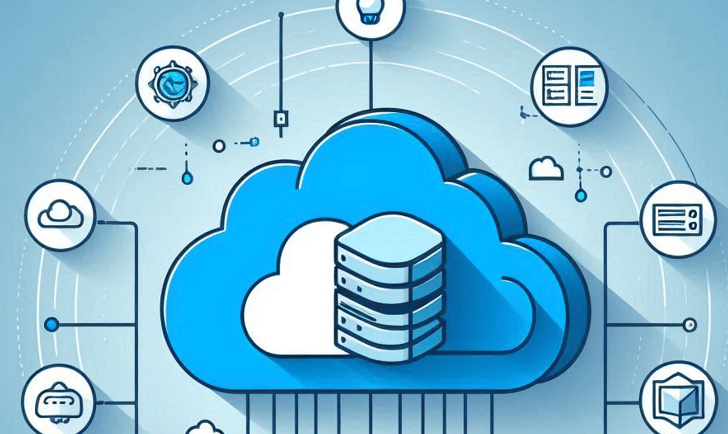Cloud Computing Terminology and Concepts
This is part of the "Cloud Computing Fundamentals" free course. This blog post presents fundamental Cloud Computing Terminology and Concepts.
CLOUDOPS
Stefanos Evangelou and ChatGPT
10/7/20244 min read


Key Terminology and Concepts in Cloud Computing
Understanding cloud computing requires familiarity with the core terminology and concepts that define the technology. In this post, we will explore the most important terms and concepts in cloud computing that every IT professional and beginner should know. These terms will help you better grasp the underlying principles of cloud architecture, services, and operations.
1. Virtualization
At the heart of cloud computing is virtualization, a technology that allows multiple virtual machines (VMs) to run on a single physical machine. Virtualization enables efficient use of hardware resources and provides isolation between different applications or services.
Key components of virtualization include:
Virtual Machine (VM): A virtualized version of a physical computer, with its own operating system and applications.
Hypervisor: The software layer that allows multiple VMs to share the same physical hardware. Examples include VMware ESXi, Microsoft Hyper-V, and KVM.
Containers: Lightweight alternatives to VMs, containers package applications and their dependencies, allowing them to run consistently across environments. Popular containerization platforms include Docker and Kubernetes.
2. Scalability and Elasticity
Scalability refers to the ability of a system to handle increased load by adding resources, while elasticity describes the dynamic allocation of resources to match demand. In cloud computing, scalability and elasticity are crucial because they allow applications to handle varying levels of traffic without manual intervention.
Vertical Scalability (Scaling Up): Increasing the capacity of an existing resource (e.g., adding more RAM or CPU to a server).
Horizontal Scalability (Scaling Out): Adding more instances of a resource (e.g., adding more servers) to distribute the load.
Elasticity is often automated in cloud environments, ensuring that resources are provisioned or deprovisioned based on real-time demand.
3. On-Demand Self-Service
Cloud computing provides users with on-demand self-service, allowing them to provision, configure, and manage resources without needing to interact with the cloud provider. This is achieved through user interfaces, such as web portals, APIs, and command-line tools, provided by cloud vendors like AWS, Microsoft Azure, and Google Cloud.
For example, users can deploy virtual machines, databases, or storage services directly from a cloud provider’s portal, only paying for what they use, and scaling as needed.
4. Cloud Service Models (IaaS, PaaS, SaaS)
Cloud computing services are categorized into three main models, which define the level of control and responsibility users have over their resources:
Infrastructure as a Service (IaaS): Provides virtualized computing resources over the internet. Users manage the operating system, applications, and data while the cloud provider manages the hardware and virtualization layer. Examples include AWS EC2, Microsoft Azure Virtual Machines, and Google Compute Engine.
Platform as a Service (PaaS): Provides a platform for developers to build, deploy, and manage applications without worrying about the underlying infrastructure. The cloud provider manages the infrastructure, runtime environment, and development tools. Examples include Google App Engine, AWS Elastic Beanstalk, and Azure App Service.
Software as a Service (SaaS): Provides fully managed software applications over the internet. Users only interact with the software itself, with no need to manage the underlying infrastructure or platform. Examples include Microsoft 365, Salesforce, and Google Workspace.
5. Cloud Deployment Models (Public, Private, Hybrid, and Multicloud)
Public Cloud: Cloud resources are owned and operated by third-party cloud providers and shared among multiple users. Public cloud is the most common model and includes services from AWS, Microsoft Azure, and Google Cloud.
Private Cloud: Cloud resources are used exclusively by a single organization, either hosted on-premises or by a third-party provider. Private clouds offer more control and security but can be more expensive to operate.
Hybrid Cloud: Combines both public and private clouds, allowing organizations to store sensitive data on a private cloud while taking advantage of the public cloud for scalability and cost savings.
Multicloud: The use of multiple cloud providers simultaneously. Organizations adopt multicloud strategies to avoid vendor lock-in, improve resilience, and optimize costs.
6. Pay-As-You-Go Pricing
One of the core advantages of cloud computing is its pay-as-you-go pricing model. Instead of investing in expensive hardware and software upfront, organizations only pay for the resources they consume, whether it’s storage, computing power, or data transfer. This model provides flexibility and cost-efficiency, especially for businesses with fluctuating resource demands.
7. High Availability and Fault Tolerance
High availability refers to the ability of a system to remain operational despite failures or disruptions. In cloud environments, high availability is achieved through the use of redundant resources, load balancers, and geographic distribution of data centers.
Fault tolerance ensures that systems continue to operate even if individual components fail. Cloud providers offer features such as automatic failover, ensuring that workloads are automatically redirected to healthy resources in the event of an outage.
8. Load Balancing
Load balancing is a technique used to distribute traffic across multiple servers, ensuring that no single server is overwhelmed by requests. In cloud environments, load balancing helps improve performance, reliability, and scalability. Major cloud providers offer load balancing services, such as AWS Elastic Load Balancer, Azure Load Balancer, and Google Cloud Load Balancer.
9. Cloud Security
Security is a critical concern in cloud computing. Cloud providers follow a shared responsibility model, where the provider manages the security of the cloud infrastructure, and customers are responsible for securing their data, applications, and operating systems. Key cloud security concepts include:
Encryption: Protecting data by converting it into an unreadable format, both at rest and in transit.
Identity and Access Management (IAM): Tools and policies for managing user access to cloud resources. Examples include AWS IAM, Azure Active Directory, and Google Cloud IAM.
Compliance: Ensuring that cloud services meet industry regulations and standards, such as GDPR, HIPAA, and ISO 27001.
10. Disaster Recovery and Business Continuity
Cloud computing offers robust disaster recovery solutions, ensuring that organizations can recover quickly from unexpected events, such as data loss or system failure. Cloud-based disaster recovery as a service (DRaaS) allows businesses to replicate critical workloads in a cloud environment and restore them when needed.
Business continuity refers to the ability of an organization to continue operations during and after a disaster. Cloud services provide automated backup solutions, geographic redundancy, and failover capabilities, minimizing downtime and ensuring business resilience.
Practical Exercises
Exercise 1: Set up a virtual machine on AWS or Azure, and configure the VM using the on-demand self-service interface. Explore how the pricing changes based on different configurations (CPU, RAM, storage).
Exercise 2: Research and compare the security practices of AWS, Azure, and Google Cloud in terms of encryption and Identity and Access Management (IAM). What are the key similarities and differences?
Exercise 3: Set up a load balancer on AWS or Google Cloud and distribute traffic between two virtual machines. Monitor how the load balancer manages traffic during high-traffic periods.
